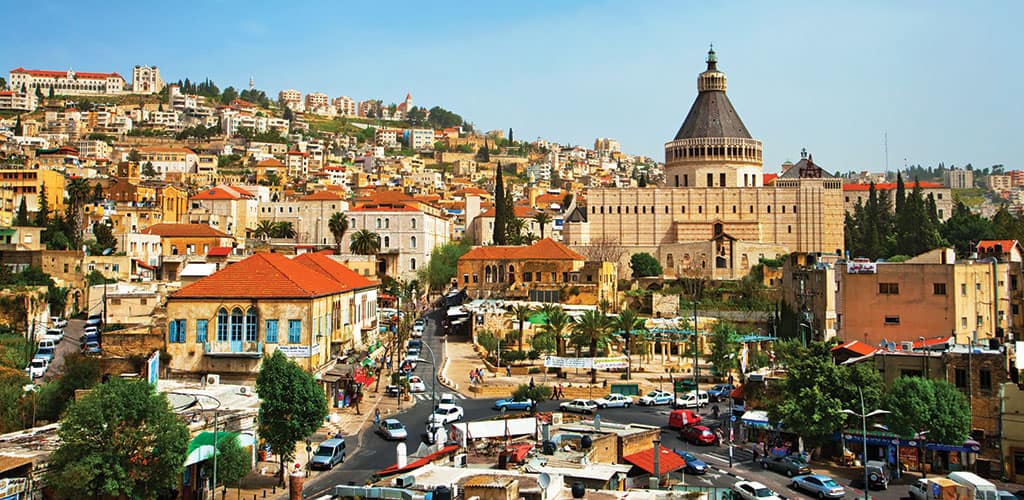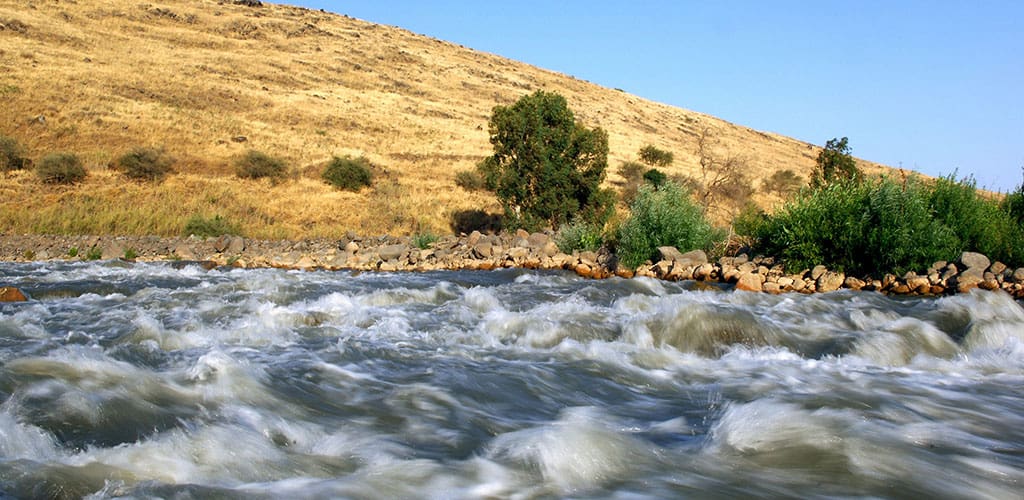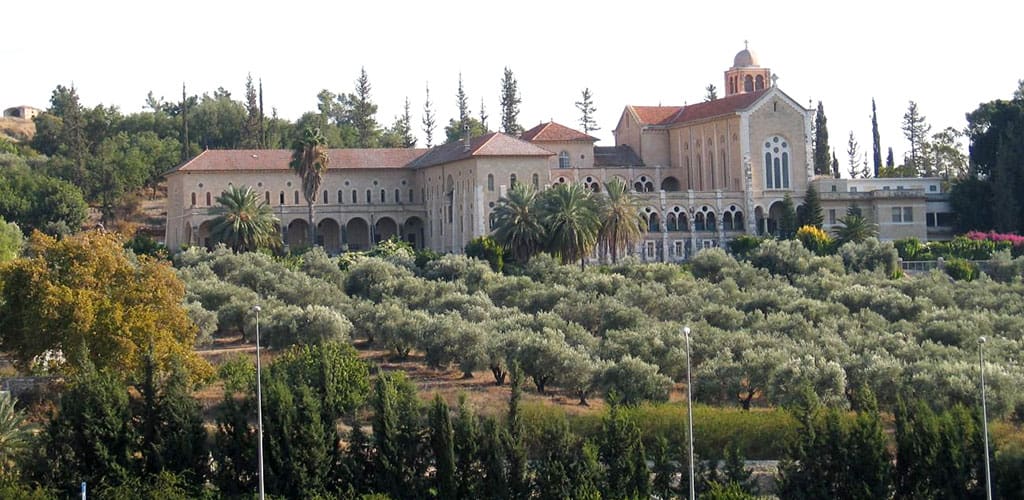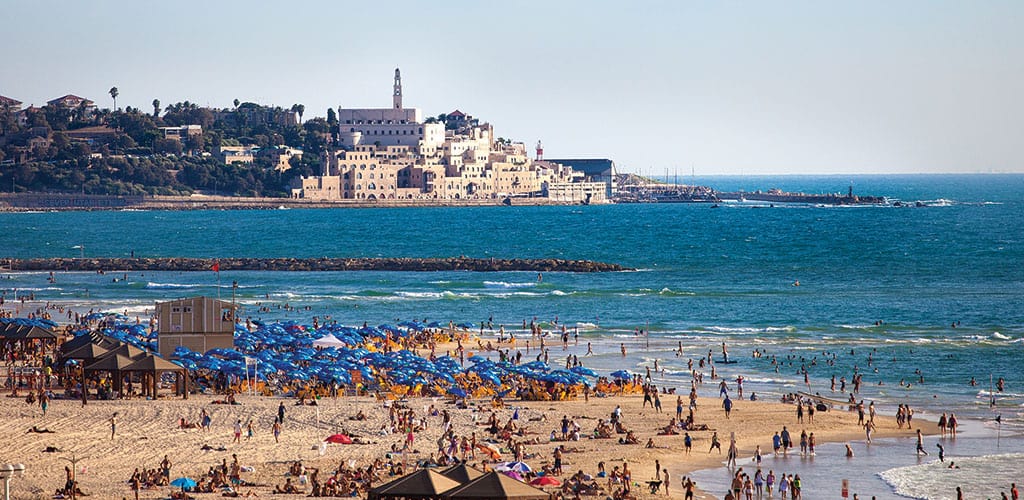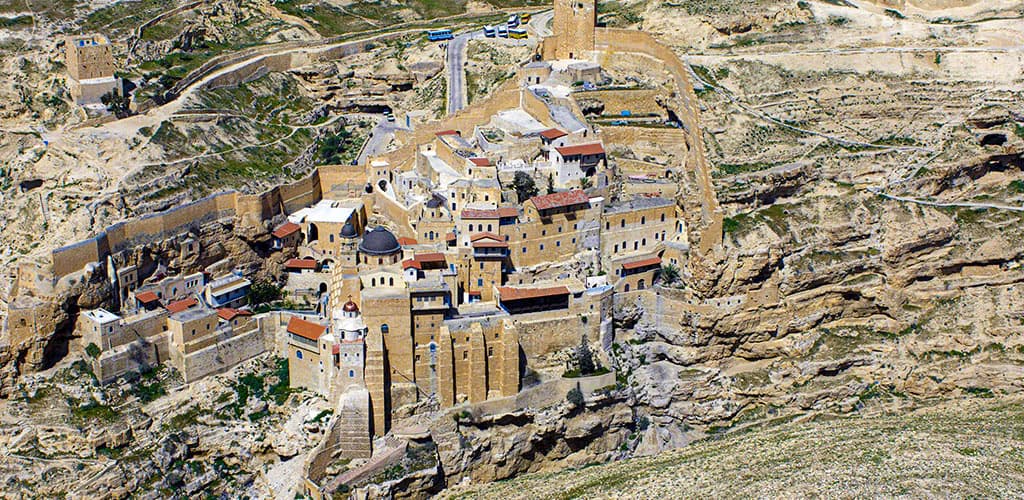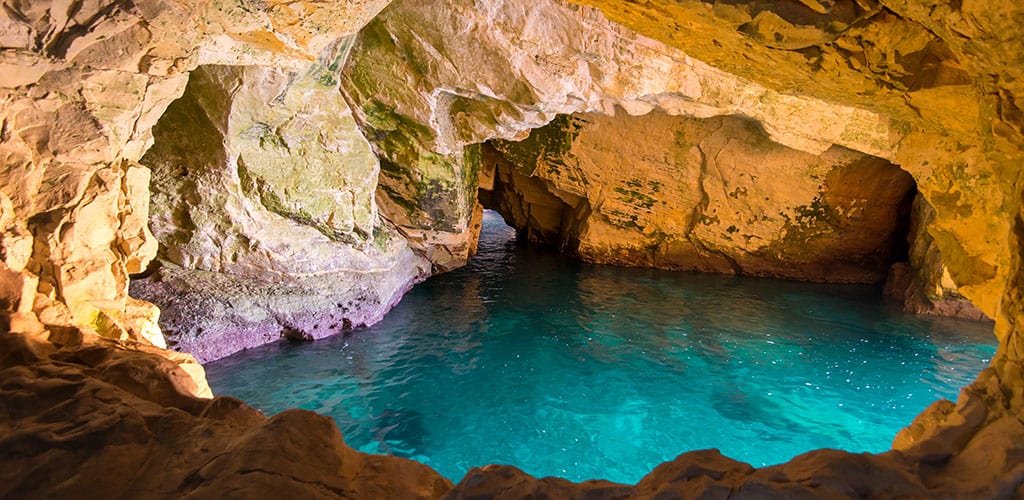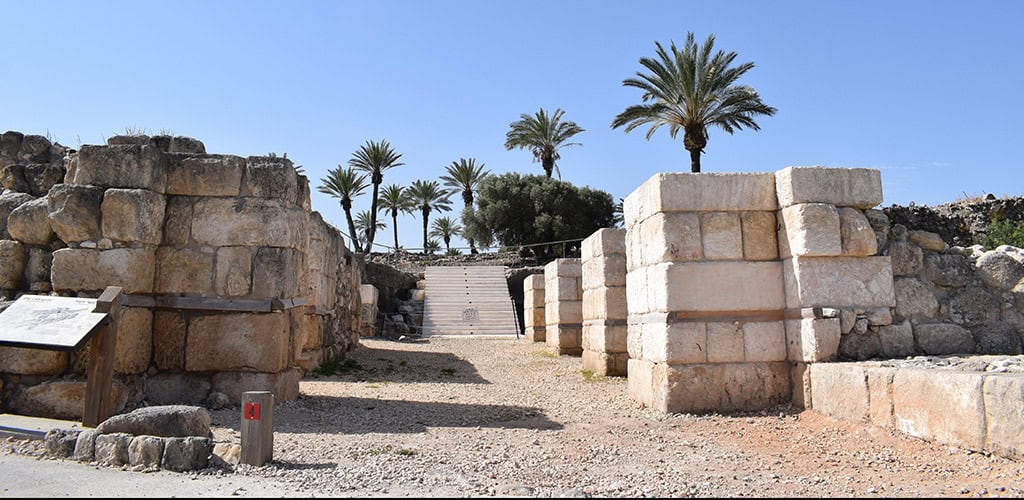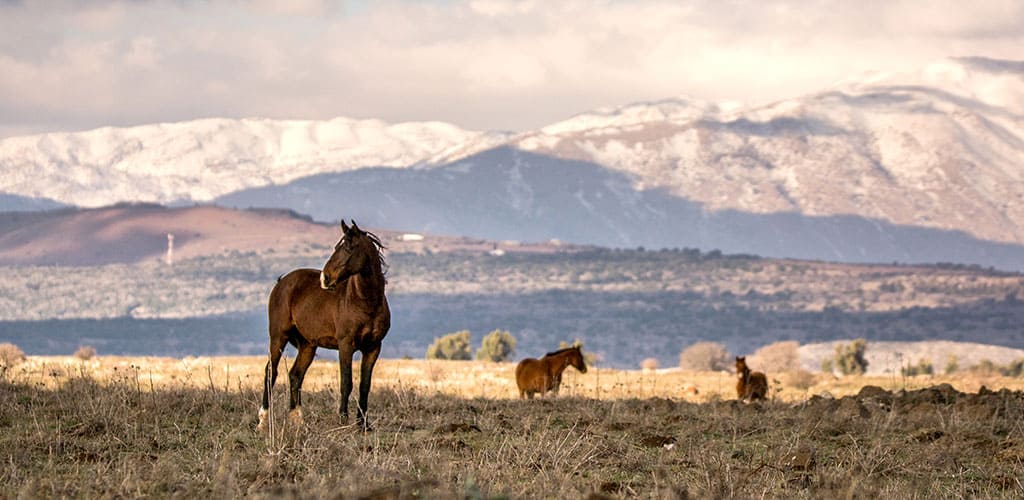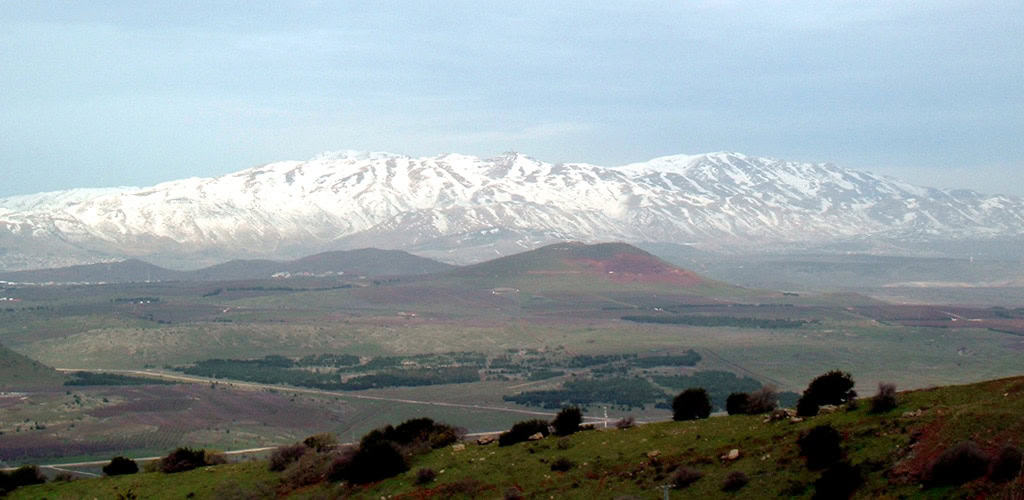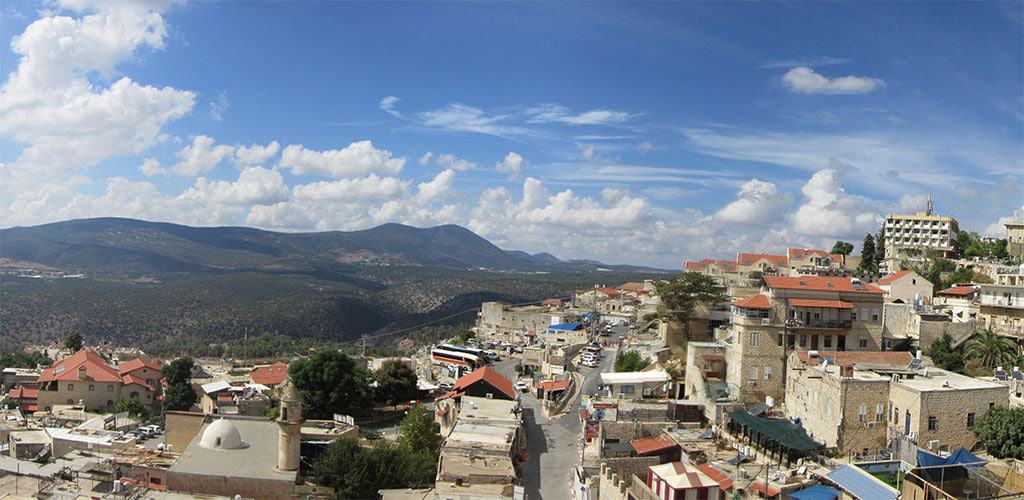
It was midnight in the ancient cemetery of Safed on a dark, moonless night. It was rosh hodesh, the beginning of the month according to the Jewish calendar, and a sliver of the new moon had yet to make its first appearance. Instead of moonlight, hundreds of memorial candles illuminated the cemetery, their small flames flickering against the sky-blue tombstones of the tzaddikim on the mountain slope. As always, on the first night of the month, the cemetery hummed with supplicants; masses of them had gathered on the plaza near the tomb of Isaac Luria Ashkenazi, who is commonly known by his acronym, the Ari (Hebrew for the lion). Murmurs of private prayers rose from the plaza and were joined by those coming from the darkness in other parts of the cemetery.
The mikve of the Ari was full. Men were immersing themselves in the freezing water that tumbles out of a small channel in the rock into the ritual bath. A line of black hats hung from the hooks along the wall, together with long black coats, long white undergarments, and tassels of tzizit. It was a regular rosh hodesh night in the spiritual capital of Galilee.
A local tradition in Safed recounts that when the Herzliya hotel was built there in 1925, the workers found a prehistoric skull with an arrow embedded in it lodged in the hollowed-out, thousand-year-old olive tree in the hotel garden. Old-timers consider this an indication of how ancient this city is. The spiritual and national leaders of the nascent Jewish community in Palestine holidayed there every summer, reclining on armchairs in the shade of this ancient olive tree.
Hayyim Nahman Bialik, the national poet, came. So did Meir Dizengoff, the first mayor of Tel Aviv, painters Man-Katz and Reuven Rubin, actress Hanna Rovina, and many more. In the 1930s, Safed was the leading resort in the Land of Israel. Thousands flocked to the town in order to spend the hot, humid summer months in the cool, clear mountain air of the Upper Galilee. Dozens of hotels, numerous restaurants, and a wealth of dance halls and night clubs attended to them. In 1933, Kaete Dan, scion of a famous Berlin family of hoteliers, took up residence in Safed. The hotel that she built was the most modern in the land; it provided not only accommodations and food, but also an entertainment team that included belly dancers and hostesses from Beirut. Her establishment thus recreated the merry atmosphere found in the capital of the Weimar Republic.
In the first decade after the founding of the State of Israel, the country’s leading artists established the Artists Colony in the city’s picturesque abandoned Arab houses. Painters such as Isaac Frenkel, Sionah Tagger, Menahem Shemi, Azriel Awret, Moshe Castel, Arieh Merzer and many others took up residence in the derelict stone houses. Art lovers subsequently joined the annual crowds of summer tourists, coming to the town to browse around the studios and galleries. In the 1960s, Safed became the summer abode of Israeli bohemia and a long line of night clubs began to operate in the old city – all open until the early hours of the morning. The most famous was the Sha’ot Haketanot (Hebrew for “the Wee Hours”), but others like Canaan Nights, the Fortress Club, the Vault Club, the Bedouin Tent, Moulin Rouge, Milo Club, and more made Safed into a very lively place. The foremost entertainers in Israel appeared here: Alexander Yahalomi, Zadok Savir, Shoshana Damari, Shai K. Ophir, and Yaffa Yarkoni, among others. The famous Tarnegolim troupe regularly performed on the small club stages and the Gashash Hahiver, soon to become an icon of Israeli culture, took its first steps here. Cabaret entertainment flourished, including nude dancers that arrived straight from the famous Moulin Rouge club in Haifa. From the middle of the 1960s, festivals were added to the range of attractions. The first international film festival in the country was held in Safed, together with festivals dedicated to various musical instruments.
As the 1970s came to a close, tourism to Safed crashed. Air conditioning allowed other resorts to compete with the cool air of the mountains and the relaxation of foreign currency restrictions on Israelis made travel abroad an increasingly tempting option for them. The political atmosphere during Israel’s first decades had not looked favorably on the hotel owners of Safed. Independent tourism establishments owned by private entrepreneurs who were not connected to the socialist elite that ran the country had to compete with the hotels and resorts that mushroomed in the kibbutzim run by people with better government connections. The new competition, boosted by sponsored vacations for government employees and workers in cooperative factories, also curbed the number of visitors to Safed. Gradually, the hotels closed, the night clubs shut their doors, and the artists, now much older, moved to Tel Aviv.
Despite this, Safed’s appeal and charm remained; it was kept alive by its warm spontaneous hospitality, blue-painted alleys, and ancient synagogues. At the turn of the twenty-first century, an attempt was made to rejuvenate its tourism industry. A government-sponsored tourism administration was created, new bed-and-breakfast establishments were encouraged, and a few hotels were refurbished. But the government investment did not bring about the desired turnaround and soon budgets dwindled and the city sunk into travel limbo.
Safed today is not your usual tourist destination. There are no marketing campaigns, formal tourism sites, or shopping centers. The gems of Safed are secluded and it is up to the visitor to discover them. The city’s charm peeks out from behind ancient iron gates and from its enclosed courtyards, galleries, small museums, synagogues, and quaint coffeehouses.
Safed is full of stories whose sources have been obscured by time; they may be traditions or legends and some may even be true tales. One tells of a couple that came for a visit. When they could not find the room that they had reserved, they asked a local passerby for directions. He escorted them to the place and then beseeched them to come to his house for a Shabbat meal. That evening, the two sat down to dinner with their newfound host and ended up singing Shabbat hymns with him until the middle of the night. Then their new friend gave them a night tour of Safed.
“That is not out of the ordinary,” the people of Safed will say, “inviting a traveler into your home is part of the local tradition.”
Havdalah candles, visitors to the candle factory in Safed will be told, must have at least two wicks – just like Safed, with its intertwined traditions of kabbalah and mysticism on the one hand and traditional hospitality on the other.
“Three things captured my heart,” rabbi Solomon Molcho wrote 340 years ago to his beloved in Safed, “the blue skies of Galilee, the blue walls of Safed, and the blue of your eyes.”
This too is the key to the romance of Safed: the coming together of great beauty.

